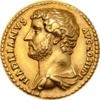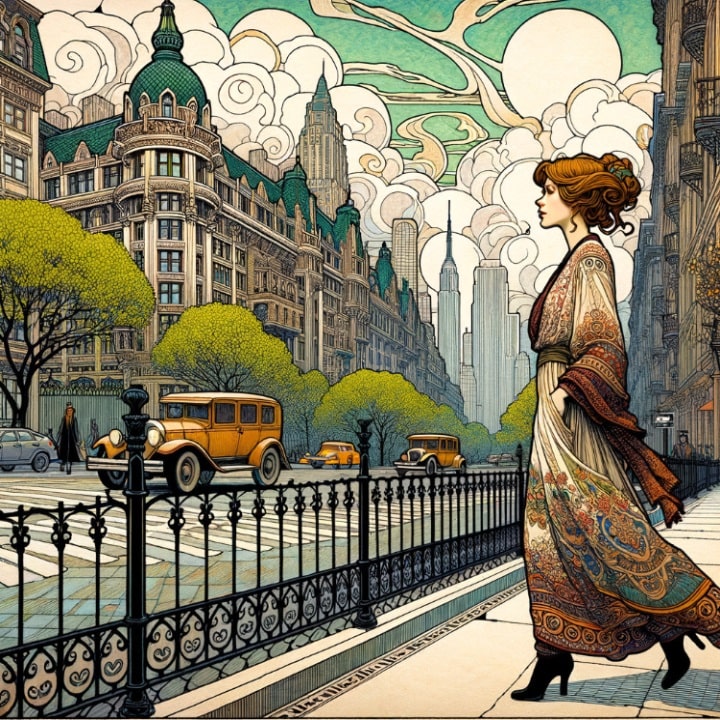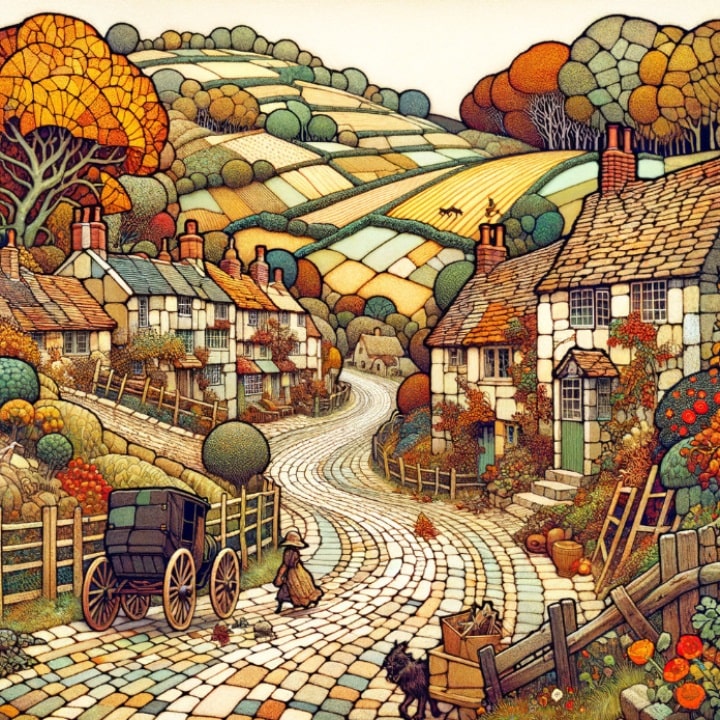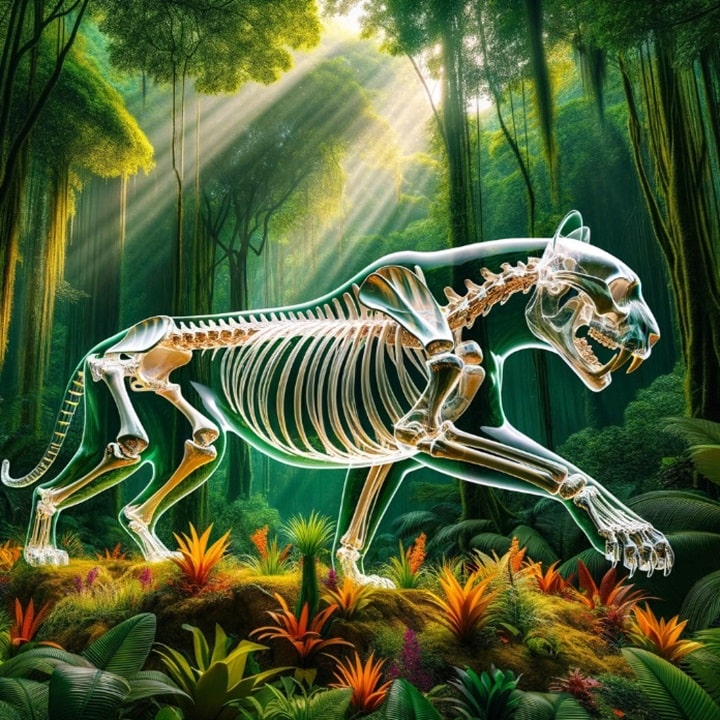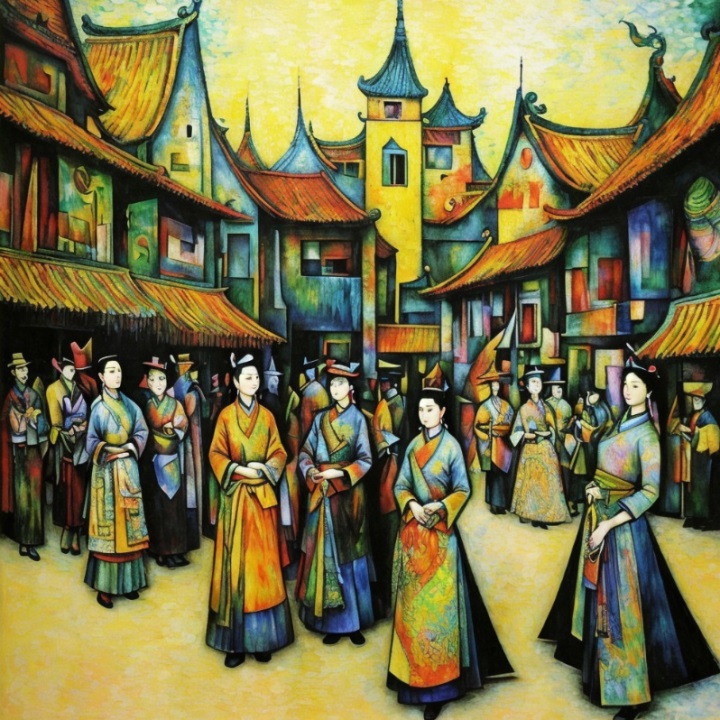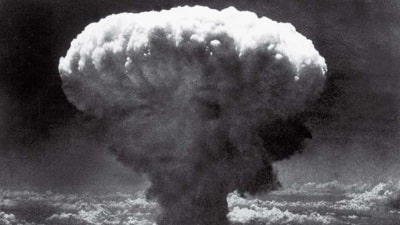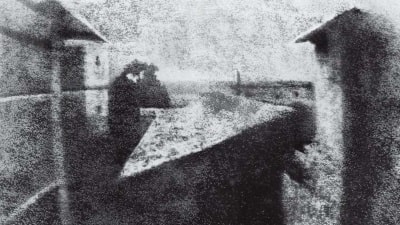
Timeless Marvels: Architectural Wonders across the Ages
Abu Simbel is a pair of ancient rock temples in southern Egypt, built by Pharaoh Ramses II around 1264 BCE to glorify himself and his queen Nefertari. The temples are renowned for their monumental scale, intricate carvings, and alignment that allows sunlight to illuminate the inner sanctum on specific days of the year. In the 1960s, they were relocated in an incredible engineering feat to save them from submersion caused by the creation of the Aswan High Dam’s reservoir, Lake Nasser.
Al-Khazneh, also known as the Treasury, is one of Petra’s most famous and iconic structures. Carved into the sandstone cliffs in the 1st century AD, it is believed to have been the mausoleum of Nabataean King Aretas IV. The façade, with its elaborate columns, intricate carvings, and blending of Greek, Egyptian, and Mesopotamian architectural styles, exemplifies the advanced engineering and artistic achievements of the Nabataean civilization. Though originally thought to be a treasury due to the urn-shaped motif at the top of the structure, recent research suggests it was likely a royal tomb.
The Alhambra is a stunning palace and fortress complex located in Granada, Spain, renowned for its intricate Islamic architecture and beautiful gardens. It was originally constructed in the 13th century by the Nasrid dynasty and later expanded by subsequent rulers. The palace is famous for its exquisite decorative elements, including ornate arches, tilework, and reflecting pools, showcasing the art and culture of medieval Spain.
Angkor Wat is a massive temple complex in Cambodia, originally built in the 12th century as a Hindu temple dedicated to Vishnu and later converted to a Buddhist site. Renowned for its grand scale and intricate carvings, it is the largest religious monument in the world. Surrounded by a vast moat, its iconic towers symbolize Mount Meru, a sacred mountain in Hindu and Buddhist cosmology.
Aqueduct of Segovia is an ancient Roman structure in Spain, celebrated for its remarkable engineering and preservation. Built around the 1st century AD, it transported water from the nearby mountains to the city using over 160 arches made of unmortared granite. This iconic landmark is both a testament to Roman ingenuity and a UNESCO World Heritage Site.
The Buckingham Palace is the official residence of the British monarch in London and a symbol of the United Kingdom’s monarchy. Originally built as a townhouse in 1703, it became the royal residence in 1837 during Queen Victoria’s reign. Known for its magnificent architecture, it is also the site of ceremonial events like the Changing of the Guard.
The Burj Khalifa, located in Dubai, United Arab Emirates, is the tallest building in the world, standing at 828 meters (2,717 feet) with 163 floors. Completed in 2010, it serves as a mixed-use skyscraper with residences, hotels, offices, and observation decks offering panoramic views of the city. Its design is inspired by Islamic architecture, and it is a symbol of Dubai’s ambition and modernity., located in Dubai, United Arab Emirates, is the tallest building in the world, standing at 828 meters (2,717 feet) with 163 floors. Completed in 2010, it serves as a mixed-use skyscraper with residences, hotels, offices, and observation decks offering panoramic views of the city. Its design is inspired by Islamic architecture, and it is a symbol of Dubai’s ambition and modernity.
The Cathedrale Notre Dame The Cathédrale Notre-Dame de Paris, commonly known as Notre-Dame, is a medieval Catholic cathedral located in the heart of Paris, France. Constructed between 1163 and 1345, it is a masterpiece of French Gothic architecture, renowned for its flying buttresses, stained glass rose windows, and intricate sculptures. The cathedral, a UNESCO World Heritage Site, gained further global recognition through Victor Hugo’s novel The Hunchback of Notre-Dame and is undergoing restoration following a devastating fire in 2019.
Chichen Itza is a large pre-Columbian archaeological site located in the Yucatan Peninsula of Mexico. It was a major city of the Maya civilization, thriving between the 9th and 12th centuries, and is famous for its iconic pyramid, El Castillo, which served as a temple to the god Kukulkan. As a UNESCO World Heritage Site and one of the New Seven Wonders of the World, it remains a symbol of Mayan culture and advanced astronomical knowledge.
Christ the Redeemer is a colossal statue of Jesus Christ located atop Mount Corcovado in Rio de Janeiro, Brazil. Completed in 1931, the Art Deco-style statue stands 30 meters (98 feet) tall, with an additional 8-meter (26-foot) pedestal, and has become an iconic symbol of Christianity and Brazilian culture. As a UNESCO World Heritage Site and one of the New Seven Wonders of the World, it attracts millions of visitors annually for its breathtaking views and spiritual significance.
The Colosseum, also known as the Flavian Amphitheatre, is an iconic Roman structure located in the heart of Rome, Italy. Completed in 80 AD under Emperor Titus, it was used for gladiatorial contests, public spectacles, and other events, capable of seating up to 50,000 spectators. As a UNESCO World Heritage Site and one of the New Seven Wonders of the World, it stands as a testament to ancient Roman engineering and culture, drawing millions of visitors annually.
The Eiffel Tower, located in Paris, France, is a world-famous wrought-iron lattice structure built as the centerpiece of the 1889 World’s Fair. Designed by Gustave Eiffel’s company, it stands 330 meters (1,083 feet) tall and was initially criticized but later became a beloved symbol of France and global architectural innovation. Today, it is one of the most visited monuments in the world, offering stunning views of Paris from its observation decks.
The Empire State Building, located in New York City, was completed in 1931 and was the tallest building in the world until 1970. Standing at 443.2 meters (1,454 feet) including its antenna, the skyscraper is a masterpiece of Art Deco architecture and a symbol of American industrial strength and innovation. It attracts millions of visitors each year who come to see its observation decks, offering panoramic views of the city and beyond.
The Forbidden City, located in the heart of Beijing, China, was the imperial palace for nearly 500 years, serving as the home of Chinese emperors and their households from the Ming dynasty to the end of the Qing dynasty. Completed in 1420, it is a vast complex covering around 180 acres and consists of nearly 1,000 buildings, showcasing traditional Chinese palatial architecture. As a UNESCO World Heritage Site, it stands as one of the most well-preserved and largest palace complexes in the world, symbolizing the power and grandeur of imperial China.
Gobekl Tepe, located in southeastern Turkey, is an ancient site dating back to around 11,000 BCE, making it one of the world’s oldest known religious structures. It consists of large stone pillars arranged in circles, with intricate carvings of animals, and was likely used for ceremonial purposes by hunter-gatherers before the advent of agriculture. The site’s purpose remains debated, but it is believed to have been a significant pilgrimage destination, possibly linked to early death cults and ritualistic practices.
The Golden Gate Bridge, completed in 1937, is an iconic suspension bridge that spans the Golden Gate Strait, connecting San Francisco to Marin County, California. Known for its striking Art Deco design and vibrant orange-red color, it was the longest suspension bridge in the world at the time of its completion. As a symbol of innovation and resilience, it remains one of the most photographed and recognized landmarks in the world.
The Great Pyramid of Giza, located on the outskirts of Cairo, Egypt, is the largest and oldest of the three pyramids on the Giza Plateau. Built during the Fourth Dynasty of the Old Kingdom around 2580–2560 BCE for Pharaoh Khufu, it originally stood at 146.6 meters (481 feet), although it now reaches 138.8 meters (455 feet) due to the loss of its outer casing stones. As one of the Seven Wonders of the Ancient World, the pyramid remains an enduring symbol of ancient Egyptian civilization, showcasing extraordinary architectural and engineering achievements.
The Great Wall of China is a vast network of fortifications built primarily during the Ming Dynasty (1368–1644), although earlier walls were constructed as far back as the 7th century BCE. Stretching over 13,000 miles, the wall was designed to protect Chinese states from invasions and raids by nomadic tribes from the north. It is considered one of the most impressive architectural feats in history, blending military, logistical, and artistic elements, and it remains a UNESCO World Heritage Site, symbolizing China’s strength and perseverance.
Hagia Sophia, located in Istanbul, Turkey, is a historic architectural marvel that has served as a cathedral, mosque, and museum. Originally constructed as a Christian cathedral in 537 CE during the Byzantine Empire, it was the largest church in the world for nearly 1,000 years. After the Ottoman conquest of Constantinople in 1453, it was converted into a mosque, and in the 20th century, it became a museum, before being reconverted into a mosque in 2020. Hagia Sophia is renowned for its massive dome, intricate mosaics, and blend of Christian and Islamic architectural elements, making it a symbol of cultural and religious significance.
Himeji Castle, located in Himeji, Japan, is one of the most well-preserved and iconic castles in the country. Originally built in 1581, it is renowned for its elegant white exterior and complex defensive design, which includes a maze of paths to confuse attackers. Known as “White Heron Castle” due to its resemblance to a bird in flight, it is a UNESCO World Heritage Site and a prime example of Japanese feudal architecture.
The Kaaba, located at the heart of the Masjid al-Haram mosque in Mecca, Saudi Arabia, is the most sacred site in Islam. Muslims around the world face towards it during daily prayers, a practice known as the Qibla. It is also the focal point of the Hajj pilgrimage, where millions of Muslims visit each year as part of one of the Five Pillars of Islam.
La Pedrera, also known as Casa Milà, is one of Antoni Gaudí’s masterpieces in Barcelona, completed between 1906 and 1912. Its undulating stone façade and unique, organic design set it apart, with features like wrought-iron balconies and a roof dotted with sculptural chimneys resembling warriors. Recognized as a UNESCO World Heritage site in 1984, La Pedrera now serves as a cultural center, offering visitors a glimpse into Gaudí’s architectural genius.
Machu Picchu, the ancient Incan city nestled in the Andes Mountains of Peru, is one of the most iconic archaeological sites in the world. Believed to have been built in the 15th century under the rule of Inca emperor Pachacuti, it was likely a royal estate or religious retreat. Rediscovered in 1911 by Hiram Bingham, Machu Picchu is renowned for its sophisticated dry-stone construction, terraces, and stunning views, making it a UNESCO World Heritage Site and a major draw for tourists from around the globe.
The Palace of Versailles, located just outside Paris, France, is a symbol of the absolute monarchy of Louis XIV, who transformed a hunting lodge into a grand palace in the 17th century. Known for its stunning architecture, including the Hall of Mirrors and vast gardens designed by André Le Nôtre, it became the seat of political power in France for over a century. As a UNESCO World Heritage site, Versailles is a major tourist attraction, offering insights into the grandeur of French royal history and the cultural influence of the time.
The Palace of Westminster, located on the banks of the River Thames in London, is home to the British Parliament and a symbol of the UK’s democratic system. The building, originally constructed in the 11th century, has undergone several expansions and renovations, with the current Gothic-style structure completed in the mid-19th century. Known for its iconic clock tower, now called Big Ben, it remains a vital political and architectural landmark, attracting millions of visitors each year.
The Parthenon, located on the Acropolis in Athens, Greece, was built between 447 and 438 BCE and dedicated to the goddess Athena. Its Doric design and massive proportions symbolize the glory of ancient Greece, particularly Athens, at the height of its power. Despite suffering damage over centuries, the Parthenon remains a UNESCO World Heritage site and an enduring symbol of classical art and democracy.
The Sagrada Familia is a monumental basilica in Barcelona designed by Antoni Gaudí, known for its unique blend of Gothic and curvilinear Art Nouveau styles. Construction began in 1882 under architect Francisco de Paula del Villar, but Gaudí took over in 1883, dedicating the rest of his life to its design. Although still unfinished, it is a UNESCO World Heritage Site and was consecrated in 2010, with an anticipated completion in 2026.
Saint Basils Cathedral in Moscow, a masterpiece of Russian architecture, was commissioned by Ivan the Terrible in the 16th century to commemorate victories over the Tatars. Known for its vibrant onion domes, the cathedral features ten chapels, each crowned with uniquely colored domes. Over the centuries, it has undergone numerous restorations, preserving its distinctive, asymmetrical design which combines elements of both Eastern and Western architectural styles.
The Sistine Chapel, located in Vatican City, is renowned for its breathtaking frescoes, particularly the ceiling painted by Michelangelo. The artwork, which includes iconic scenes such as The Creation of Adam, depicts various biblical stories from Genesis and was completed between 1508 and 1512. In addition to Michelangelo’s ceiling, the chapel also features The Last Judgment on the altar wall, painted later by the artist between 1536 and 1541, making it a masterpiece of Renaissance art.
The Statue of Liberty, a gift from France to the United States, was dedicated on October 28, 1886, and has become a global symbol of freedom and democracy. Designed by French sculptor Frédéric Auguste Bartholdi, it was intended to commemorate the centennial of American independence and to celebrate the friendship between France and the U.S. Standing in New York Harbor, it serves as a welcoming beacon to immigrants and visitors, symbolizing hope and the pursuit of liberty.
Stonehenge, located on Salisbury Plain in England, is a prehistoric monument built during the Neolithic and Bronze Ages, with its construction spanning multiple phases from around 3100 BCE to 1600 BCE. Initially, it consisted of a circular ditch and bank, followed by the erection of massive sarsen stones and smaller bluestones. The purpose of Stonehenge remains a topic of debate, with theories suggesting it was used for religious rituals, astronomical observations, and even as a burial site.
The Taj Mahal, located in Agra, India, is a stunning white marble mausoleum built by Emperor Shah Jahan in memory of his beloved wife, Mumtaz Mahal, who passed away in 1631. Construction began in 1632 and was completed in 1654, involving over 20,000 workers and artisans. The monument is renowned for its exquisite symmetry, intricate inlay work, and beautiful gardens, making it a symbol of eternal love and one of the most recognized architectural wonders in the world.
Westminster Abbey is one of London’s most iconic landmarks, originally built in the 11th century by King Edward the Confessor. It is renowned for being the site of royal coronations, with every monarch since William the Conqueror crowned there, and for housing the tombs of significant figures, including monarchs and writers like Geoffrey Chaucer. The Abbey also features the Coronation Chair, and its rich history continues today with notable events such as the funerals of monarchs, including Queen Elizabeth II.
The slider stops when you click on an image and resumes when clicked again. Use the arrows on the image or the mouse wheel to scroll manually. Use Windows’ Find function (Ctrl+F) to locate the text you want. In the upper right block, click on a magenta-colored building name to display search site buttons (which provide information about that building) at the bottom right of the screen. You can also select any text.
Humans began painting 40,000-52,000 years ago or earlier. The ‘Salvator Mundi,’ created by Da Vinci, was auctioned at Christie’s, New York, on November 15, 2017, for $450.3 million. 🌺
















